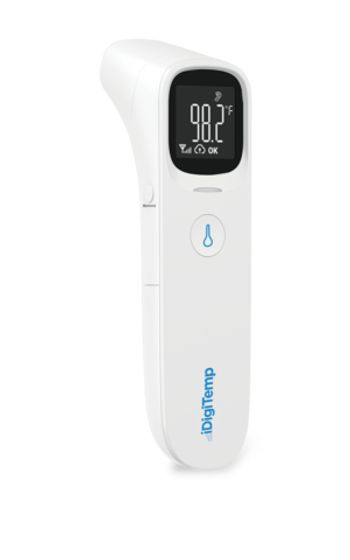
AI can dramatically improve our approach to primary care and chronic disease management
Key Takeaways
- Chronic disease prevalence is rising, with 42% of Americans having multiple conditions, increasing healthcare costs and burdening primary care.
- Preventive care is vital but underutilized due to cost, access, and awareness issues, leading to missed screenings and poorer outcomes.
AI-driven analytics revolutionizes primary care, enhancing chronic disease management and preventive strategies while alleviating physician burdens for better patient outcomes.
Primary care physicians are on the front lines of a growing chronic disease crisis. Today,
Many patients today miss important preventive and primary care opportunities for a variety of reasons, including concerns about high
Access to care is also a challenge, with almost
Meanwhile, PCPs face growing pressure to deliver high-quality, cost-effective care in value-based care models that prioritize outcomes over volume and focus on prevention rather than intervention. There is an urgent need to disrupt the status quo in primary care. Fortunately, the rise of advanced AI-driven analytics can help physicians address patient needs, meet quality goals, and alleviate administrative burdens to improve care and outcomes.
AI-driven analytics + preventive care strategies = better outcomes in primary care
The importance of preventive care for chronic disease prevention and management cannot be overstated, but traditional fee-for-service payments do not reward or support these activities. FFS models prioritize volume over outcomes, leading to reactive care that makes effective chronic condition management and prevention more difficult.
However, VBC initiatives that prioritize preventive care can incentivize patients to focus on long-term health, and reward primary care providers through reimbursements that focus on managing overall patient health in a proactive way.
AI-powered tools support the transition to VBC by surfacing insights from multiple data sources – including claims, pharmacy, social determinants of health, and EHR data – to inform timely interventions and close care gaps. AI algorithms can translate what used to be a vast array of disparate data points into predictive models that highlight patients at higher risk of missing critical care, such as preventive screenings, or are at higher-than-average risk of being diagnosed with a new or worsening chronic condition. When in-depth insights on patient risk factors are available to care teams and clinicians, it facilitates care coordination for more targeted interventions, diagnoses, and treatments.
AI tools can also improve primary and preventive care by minimizing administrative burdens, maximizing physician resources to ensure patients receive high-quality care while freeing care teams from time-consuming manual tasks. Automated and composable solutions help clinicians take control of data, translating advanced analytics insights into actionable care steps that support the clinical decision-making process. Automation makes it easier for everyone, including smaller care teams, to make the most of data, leading to better outcomes for physicians and patients alike.
An example of this in practice is the use of AI-driven predictive models to identify patients with a higher-than-average risk of developing cardiovascular disease in the next 12 months. Care teams can use this information to create targeted interventions based on each patient’s unique needs – such as recommending critical preventive screenings, scheduling regular checkups with a cardiologist, or enrolling the person in a wellness program to help with lifestyle changes.
Predictive models can also help patients slow the progression of chronic disease, avoid disease onset entirely, or mitigate the chances of a serious event, such as a stroke or heart attack. Care teams can improve early detection and management of chronic diseases when data from AI-powered predictive models is embedded in everyday workflows. With these tools at their disposal, primary care clinicians can deliver more personalized, evidence-based care. This is especially prevalent as recent findings show that
As the use of AI tools grows in health care practices, so does the need to maintain the highest data security standards, ensuring patient privacy and HIPAA compliance. Health care organizations ready to integrate AI tools into daily workflows should look for a software partner with robust testing and validation processes to eliminate any potential bias or error, and ensure their models are interpretable rather than functioning as a “black box.” Healthcare providers should view AI as a tool to improve care in concert with advanced medical knowledge and experience; this technology should be a component of, but not a replacement for, clinical expertise.
Payers’ role in supporting the shift to VBC and preventive care
A commitment to value-based care is the most effective option to reverse decades of ever-increasing health care costs in the United States, and VBC success revolves around a strong primary and preventive care system. Today’s primary care workforce is under significant pressure to improve care, but FFS systems make it difficult or impossible to devote the necessary time to each patient to achieve the desired results of whole-person health management.
In one
VBC holds promise to bridge some of these gaps, but that will only be possible with tools like AI to support the future of primary care. Payers will play a key role in this shift by structuring incentives that align VBC goals with the realities that primary care clinicians face and providing collaborative tools that share insights on population health and care gaps with provider partners more easily in their current workflow.
Aside from the buzz around generative AI and its potential to improve care, AI is already helping increase administrative efficiency and facilitate better payer-provider collaboration. Enterprise data platforms today can bring together vast volumes of patient data from a wide range of disparate sources into a single source of truth that powers health care organizations, including information typically siloed in payer systems (claims data) and information typically only available to clinicians (EHR data). AI streamlines the process of combining multiple disparate data sets into a unified patient record by limiting manual work and standardizing, normalizing, and enriching the data for use in analytics and care coordination software tools. Payers committed to VBC will facilitate seamless data sharing on patients’ most pressing needs, streamlining decision-making and improving care quality and cost.
Building a healthier future with preventive care
As chronic disease prevalence rises, implementing sustainable and reliable value-based care is essential to improve population health. But that burden should not fall solely on the shoulders of PCPs. Employers, payers, and providers must work together to encourage and facilitate optimal preventive care. By aligning with VBC principles and adopting AI tools that ease clinical workloads and enable earlier intervention, primary care practices can lead the way in VBC. In this new world, primary care providers should be able to:
- Spend more time with each patient
- Connect with high-risk patients as needed (more than just an annual checkup)
- Focus on clinically integrated care
- Be rewarded for outcomes and performance, not just volume
AI tools have the power to make this transformation easier by highlighting proactive opportunities for chronic disease detection and management, automating protocols and outreach that contribute to improved health outcomes, reducing administrative expenses and physician burnout, and unlocking a more sustainable primary care future.
Rajiv Mahale is the chief product and business development officer at
Newsletter
Stay informed and empowered with Medical Economics enewsletter, delivering expert insights, financial strategies, practice management tips and technology trends — tailored for today’s physicians.








